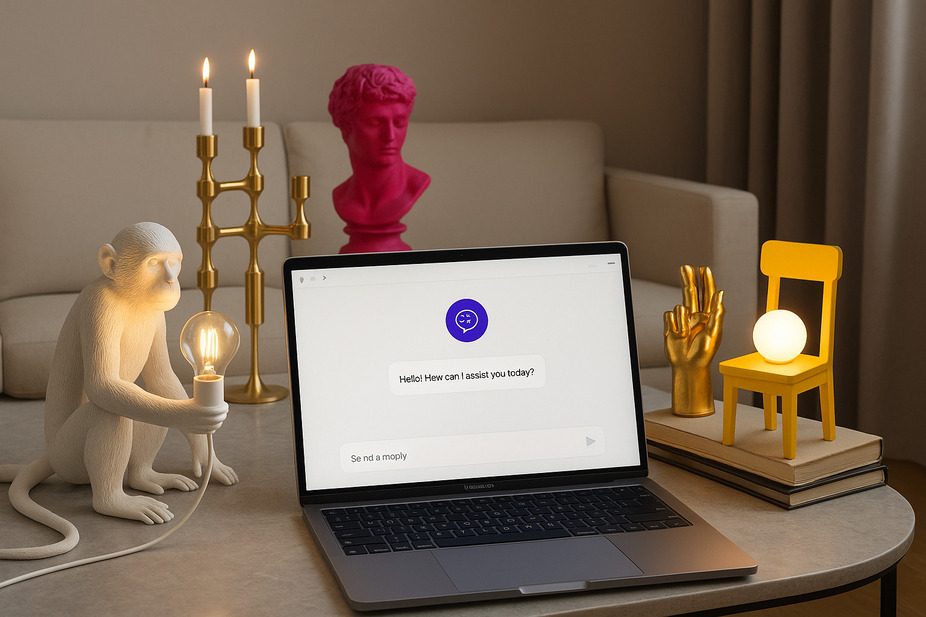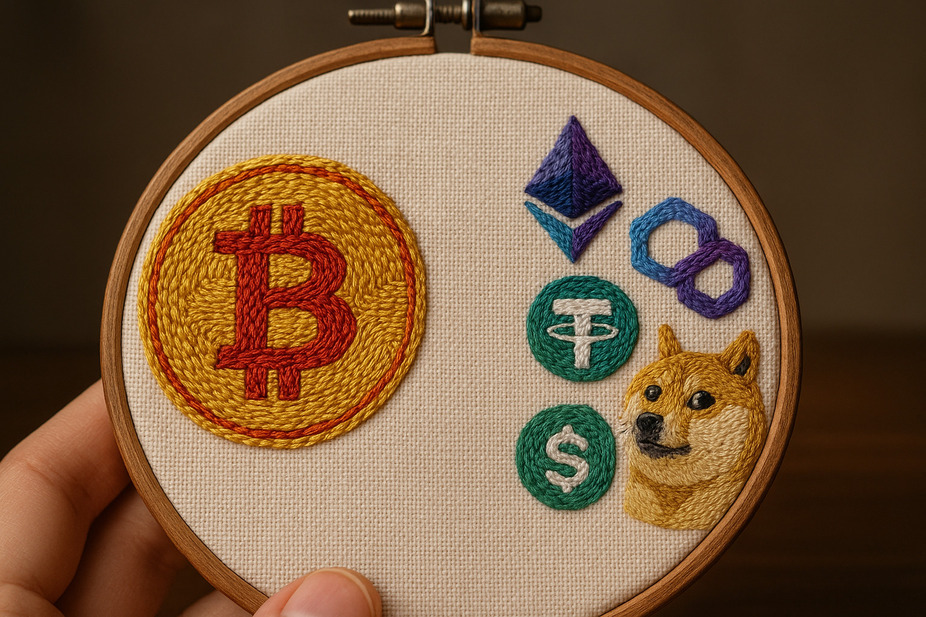Decentraland
Download Ironwallet app and get tool for making transaction without network fee
About Decentraland
Decentraland (MANA) represents a pioneering venture in the realm of blockchain technology, offering a virtual space where participants can craft, traverse, and monetize their digital landscapes. This digital ecosystem operates atop the Ethereum blockchain, providing a foundation for users to acquire virtual plots, develop and exchange unique digital assets, and engineer immersive experiences. The environment promotes interactive endeavors such as gaming, virtual gatherings, and expansive social engagements.
Operated by its community, Decentraland champions a model of governance that empowers its users with autonomy over their digital assets and the experiences they curate. This approach fosters a democratic and decentralized atmosphere within the virtual domain. The platform’s native digital currency, MANA, facilitates all transactions, serving as the primary currency for acquiring land and trading digital items within this expansive virtual universe.
History of Decentraland
Decentraland, envisioned by Esteban Ordano and Ariel Meilich, debuted in its current avatar in 2017, reflecting a developmental trajectory akin to the milestones of human societal progress. Initially launched in 2015, the platform’s embryonic “Stone Age” phase presented a simplistic 2D grid where pixels denoted ownership in the nascent digital realm.
As the platform evolved, by late 2016, it had entered what was termed the “Bronze Age,” characterized by a leap into a 3D landscape segmented into distinct plots, setting the stage for a more structured digital universe. The progression continued into what the founders called the “Iron Age,” marked by the integration of a peer-to-peer (P2P) network. This technological advancement facilitated the creation of applications, interactive content, and dynamic user interaction, propelling Decentraland toward a more immersive and responsive virtual environment.
The culmination of these stages, supported by the Ethereum blockchain, transformed Decentraland into a robust metaverse ecosystem. Ethereum’s capabilities as a decentralized computing platform underpin the sophisticated operations of Decentraland, allowing it to flourish as a fully-fledged virtual world where users engage with a digital economy and interactive social activities.
How Decentraland Works
In Decentraland, creativity is the currency, powered by its native token, MANA. This digital currency, an ERC-20 token, is essential for fueling transactions and initiatives within the platform. Whether users are buying digital real estate, crafting games, or developing applications, MANA is utilized—and often “burned”—to bring these digital ambitions to life.
Beyond its monetary function, MANA is instrumental in the creation and operation of a variety of centralized applications and services. Decentraland’s blockchain backbone enables creators to conceive and monetize innovative experiences, charging other users for access or interaction, from viewing to using bespoke digital constructs.
The platform employs two key types of non-fungible tokens (NFTs): LAND and Estate. LAND represents a specific plot of digital terrain measuring 16 by 16 meters, while an Estate comprises multiple contiguous LAND tokens. These digital assets form the foundation of Decentraland’s vast, user-generated landscapes.
Decentraland is not just about solitary creation, it’s a hub for communal engagement. The platform hosts a diverse array of community events—ranging from concerts and movies to casino nights and avatar dance parties. Furthermore, it’s a marketplace for trading digital art and property. The virtual world is segmented into distinct neighborhoods with unique vibes and purposes, including Vegas City, District X (noted for its adult-oriented content), Fashion Street, and Dragon City, each offering a unique cultural flavor and community experience.
Decentraland’s Architectural Framework
Decentraland is underpinned by a sophisticated structure of Ethereum smart contracts, segmented into distinct layers that enhance both functionality and user experience.
Consensus Layer: Ownership Tracking
At its foundation, the consensus layer of Decentraland ensures secure tracking of ownership. It maintains a comprehensive ledger detailing each LAND token—these are unique parcels within the virtual landscape, defined by specific coordinates and linked to a metadata file that describes the content and ownership of the plot.
Content Layer: Dynamic Virtual Realms
The content layer is where the virtual world comes to life, managing what occurs within each parcel. This layer includes:
- Content Files: These consist of all static audio and visual elements.
- Script Files: These scripts dictate the placement and behavior of content across the landscape.
- Interaction Definitions: Facilitating direct peer-to-peer interactions, including gestures, voice chats, and messaging.
Real-Time Layer: Social Interaction
Elevating the interactive experience, the real-time layer supports dynamic social interactions through user avatars. It enables features such as voice chatting and instant messaging, fostering a social environment reminiscent of physical interaction.
Marketplace and Building Tools
Beyond its immersive world, Decentraland provides practical tools for creation and commerce:
- Marketplace: This platform allows users to manage, acquire, and sell LAND tokens, priced in MANA. It serves as a venue for transactions involving parcels, wearables, and other virtual goods, with all activities being secured and recorded on the Ethereum blockchain.
- Builder: Decentraland’s builder tool is an intuitive drag-and-drop editor that empowers landowners to craft and customize scenes on their parcels. This tool offers access to extensive customization libraries and sophisticated payment functionalities, enabling creators to develop engaging and interactive virtual experiences.
Through these layers and tools, Decentraland merges blockchain technology with a user-driven virtual world, creating a decentralized platform for digital creativity and interaction.
Unpacking Decentraland’s Distinctive Edge
Decentraland emerges as a frontier platform for content creators, entrepreneurs, and entertainment seekers, redefining engagement in a digital terrain.
Core Attributes of Decentraland
- Expansive Virtual Real Estate: Known as The Metaverse, Decentraland is an extensive network of 90,601 virtual land parcels. Each parcel, fixed at 16m x 16m (256 square meters), is meticulously plotted along cartesian coordinates, offering a structured yet boundless canvas for digital development.
- Architectural Freedom: Landowners wield unprecedented freedom to mold their digital domains. Whether erecting intricate structures, designing engaging games, or crafting targeted advertising content, the possibilities are limitless.
- Monetization Opportunities: Beyond being a mere creative outlet, Decentraland provides potent avenues for monetization. Users can lease their digital properties or the immersive experiences they create, capitalizing on their virtual investments through transactions in cryptocurrency.
Decentraland’s blend of expansive virtual plots, creative autonomy, and direct monetization opportunities crafts a unique ecosystem where artistry and commerce converge seamlessly in the realm of blockchain technology.
Decentraland’s Dual-Token Dynamics
As a trailblazer in the metaverse sector, Decentraland continues to captivate the crypto community, thriving amid escalating competition. A critical element setting Decentraland apart is its innovative dual-token architecture, leveraging the Ethereum blockchain to enhance both utility and governance.
LAND Token: Exclusive Digital Real Estate
At the core of Decentraland’s economy is the LAND token, a non-fungible token (NFT) that represents ownership of a virtual plot of land. Each LAND token encompasses 256 square meters of virtual space, with a finite total of 90,601 parcels available. This scarcity imbues each parcel with significant intrinsic value, underscoring its appeal as a digital asset.
MANA Token: Versatile Cryptocurrency
Contrasting with the unique nature of LAND, the MANA token operates as a fungible entity under the ERC-20 token standard. Initially minted in 2020, the supply of over 2.1 billion MANA tokens supports a variety of transactions and activities within Decentraland. MANA is pivotal for purchasing LAND, digital fashion items, avatars, and other virtual goods, facilitating seamless and swift exchanges on the network.
Beyond Transactions: Governance and Staking
MANA’s utility extends into governance, where it plays a crucial role in Decentraland’s decentralized autonomous organization (DAO). Here, token holders wield influence over the platform’s future, proposing and voting on changes to the protocol. Furthermore, staking MANA not only secures the network but also rewards participants with additional tokens, offering a yield based on the amount staked and the prevailing interest rates.
Through its sophisticated twin-token system, Decentraland not only supports a vibrant digital marketplace but also empowers its community with financial and managerial control, setting a precedent in the evolving landscape of virtual worlds.
Opportunities and Challenges Facing Decentraland
For a project as ambitious as building a decentralized virtual world, Decentraland faces substantial opportunities as well as challenges. A key opportunity is tapping into the rapid growth of virtual worlds and the blockchain-based ownership of digital assets. Partnering with tech companies, gaming studios, and retailers provides avenues to drive mainstream adoption.
However, platforms like Decentraland also face hurdles to mass adoption. The development tools currently pose a steep learning curve for non-technical users. And concerns around governance mechanisms, content moderation, and technical scalability need addressing as the world expands. But the project shows promising potential if these challenges have solutions.

























